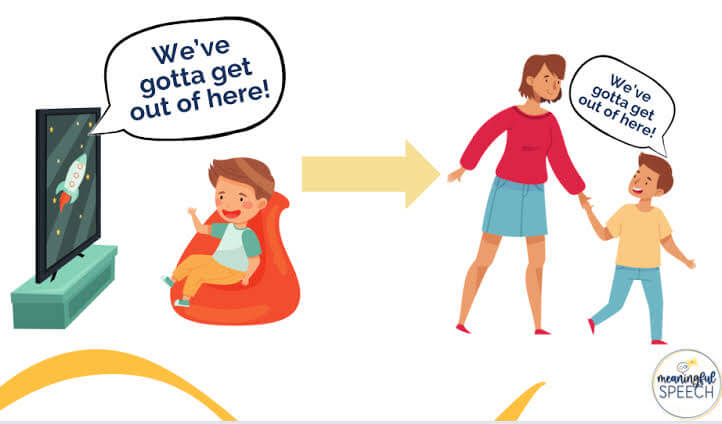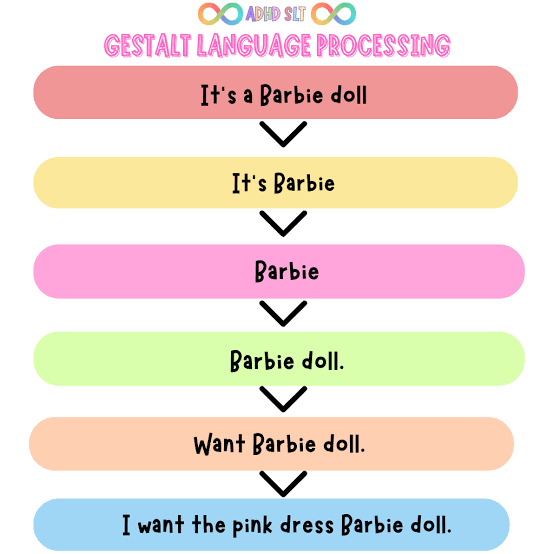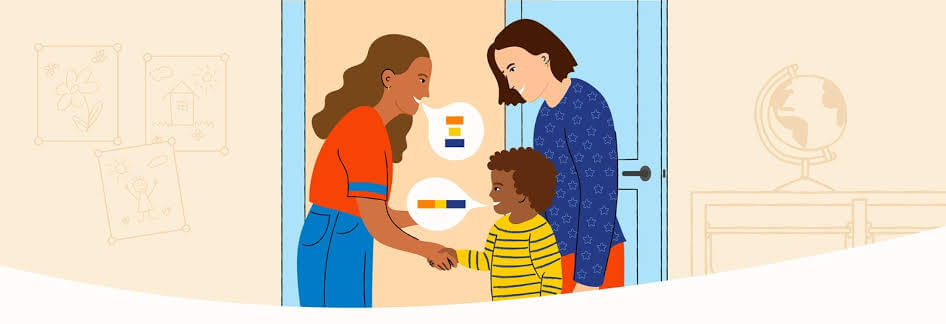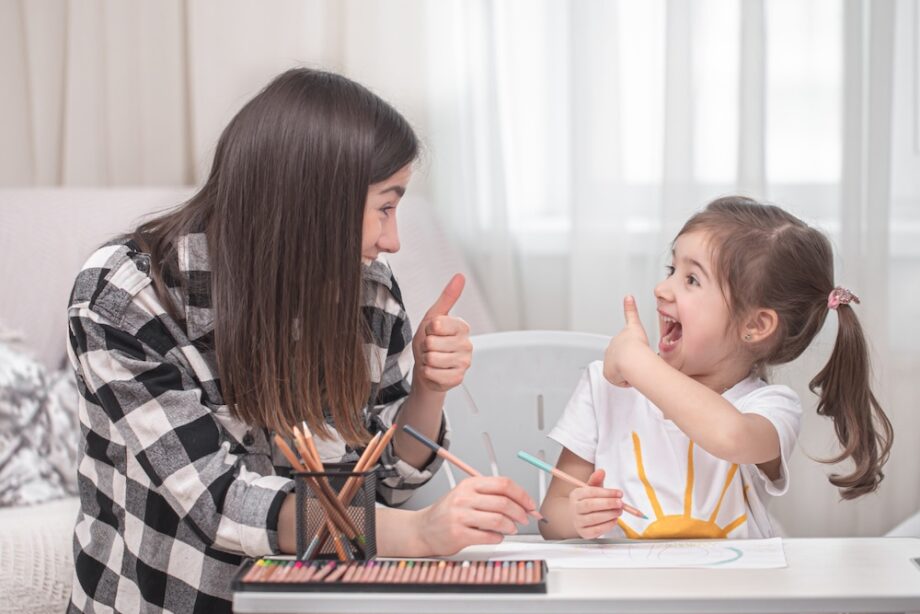Language development in children is fascinating and varies from child to child. Two primary models help explain how kids acquire language: the Analytical Model and the Gestalt Model. Understanding these can help parents support their child’s unique language journey.
Analytical Model (Bottom-Up Approach)
In the analytical model, children learn language by breaking it down into smaller parts—individual words and sounds. They gradually build their vocabulary and grammar through observation and repetition.
- “Typical” language acquisition (historically known as this).
- The child learns single words as units first (ex: “go”).
- Progression of language learning moves towards combining words into different phrases and sentences (ex: “I want to go” or “go in”).
Real-Life Example: Meet Emma (18 months old):
Emma starts by saying simple words like “mama,” “ball,” and “dog.” As her vocabulary grows, she forms phrases like “big dog” and “want juice.” Emma analyzes the words she hears and applies them in context, slowly constructing more complex sentences.
Gestalt Model (Top-Down Approach)
In contrast, the gestalt model involves learning language in larger chunks or phrases. Children may initially use whole sentences or scripts without understanding each word’s meaning. Over time, they break these chunks down and rearrange them creatively.
- Begins with the child imitating phrases he or she previously heard(delayed echolalia).
- A child then breaks down the phrase as he or she learns the meaning of the individual words.
- The child uses those individual words to build other, novel phrases and sentences to communicate.
Real Life Example: Meet Liam (2 years old):
Instead of saying single words, Liam says phrases like “I want cookie” or “Let’s go outside,” which he’s heard from his parents. He might repeat entire lines from his favorite show. Gradually, he dissects these chunks to form new sentences like “Go park” or “Want juice.”

What Is Gestalt Language Processing?
Gestalt Language Processing is when a child learns language in whole chunks or “gestalts” rather than building sentences word-by-word. These gestalts often come from familiar phrases heard in daily life, TV shows, songs, or conversations.
Examples of Gestalt Language:
Instead of saying “I’m hungry,” a GLP child might say, “Time to eat now!” because they’ve heard it repeatedly during mealtimes.
After falling, instead of saying “I fell down,” they might say, “Uh-oh, we have a problem!” mimicking a favorite cartoon.
When excited, they might exclaim, “Let’s go on an adventure!” even if they’re just heading to the park. These phrases are meaningful to the child but might not always align with the current situation.


How to Identify Gestalts at Home?
Parents often overlook GLP because these phrases sound fluent. Here’s how you can recognize gestalts:
- Repetitive Phrases: Does your child repeat the same phrase in different situations?
- Delayed Echolalia: Are they using phrases they heard earlier, sometimes out of context?
- Fixed Intonation: Is the phrase always said with the same rhythm or tone?
- Limited Flexibility: Do they struggle to change words within a phrase to fit new situations?
Observation Tip:
Keep a simple journal of phrases your child frequently uses. Note the context in which they say them.
How to support Gestalt Language processors?
- Script-Based Play: Use familiar scripts from songs, movies, or routines to build language predictability. Create fun role-play scenarios where these scripts can be adapted.
- Visual Storyboards: Develop colorful, engaging visual storyboards that map out common phrases or activities, helping to anchor language structures.
- Echo-Friendly Environments: Encourage the use of repeated phrases in meaningful contexts. Create echo catchphrases tied to daily activities.
- Musical Integration: Incorporate rhythmic chants, songs, or beats to reinforce language patterns. Music aids memory and can make language learning enjoyable.
- Interactive Books: Design books with repetitive phrases and predictable endings, allowing the child to “read” along using gestalt chunks.
- Movement Activities: Pair language with physical actions (e.g., “Ready, set, go!” during races) to strengthen language through sensory-motor connections.
- Video Modeling: Create short, personalized videos demonstrating phrases in action. Rewatching helps reinforce language in different contexts.
- Language-Rich Routines: Embed consistent phrases into daily routines (e.g., “All done” after meals) to create natural repetition.
- Peer Modeling: Facilitate playdates with peers who model natural language patterns, fostering organic learning opportunities.
- Art and Craft Projects: Use art activities to narrate steps with repetitive language, making the learning process hands-on and engaging.

The Role of a Speech-Language Pathologist (SLP)
An Speech Language Pathologist (SLP) trained in Gestalt Language Processing can be a valuable ally. Their role includes:
- Assessment: Identifying if your child is a GLP and understanding their language patterns.
- Individualized Planning: Designing strategies tailored to your child’s unique communication style.
- Guided Language Development: Helping your child move from memorized phrases to flexible, spontaneous speech.
- Parent Coaching: Teaching families how to support language growth at home through natural interactions.
How SLPs Help Families
- Workshops and Training: Educate parents about GLP techniques.
- Video Modeling: Show real-life examples to demonstrate effective strategies.
- Collaborative Approach: Work closely with parents, educators, and other professionals to create a consistent support system.
Key Takeaway for Parents for Children with GLP
- Both models are normal: Some kids are analytical, others are gestalt learners, and many show a mix of both.
- No one-size-fits-all: Every child’s language journey is unique.
- Patience is key: Celebrate progress, whether it’s single words or full phrases.
If you suspect your child might be a Gestalt Language Processor, observe their language patterns, celebrate their communication, and consult an speech language pathologist experienced in GLP. With the right support, children who process language gesturally can develop rich, flexible communication skills that reflect their vibrant personalities.
Your child’s words matter, no matter how they come...

